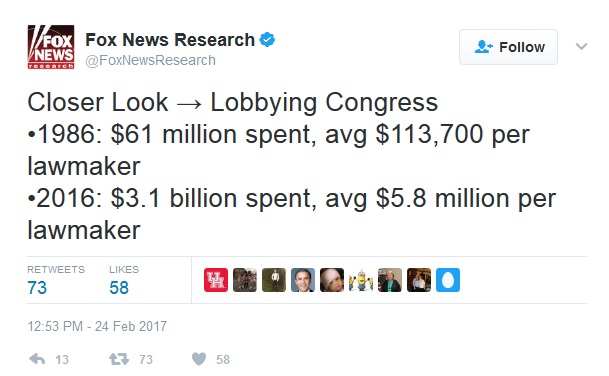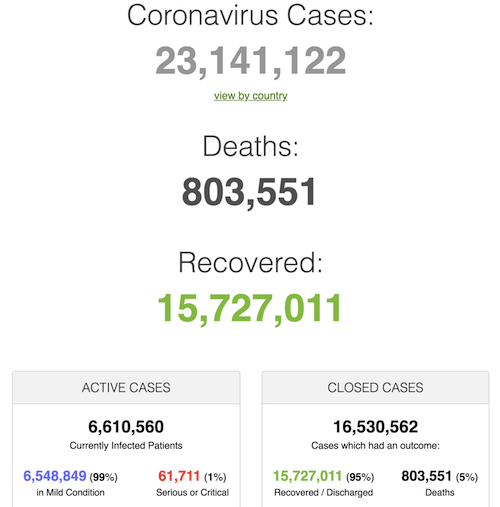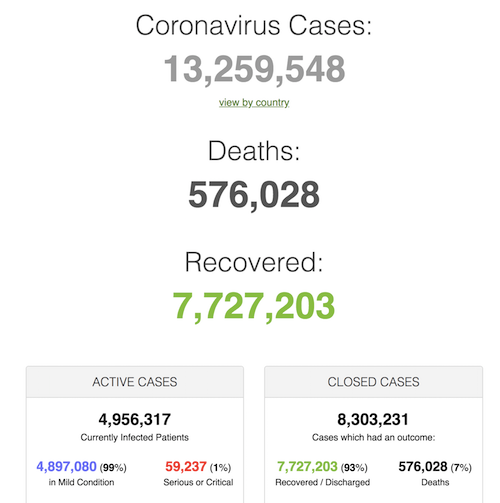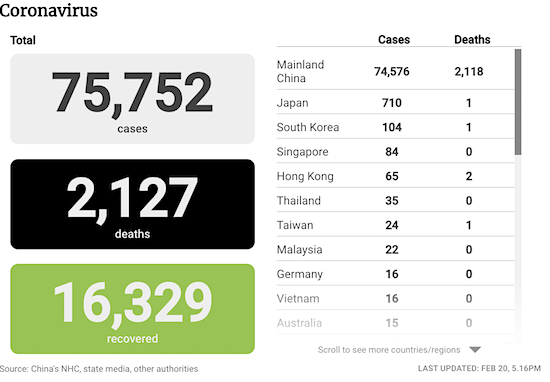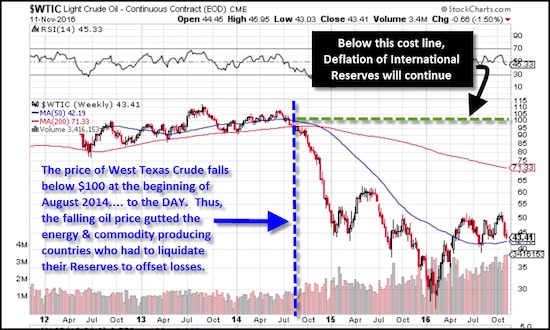
Adolphe Yvon Genius of America c1870



Too much panicking about this. To know if a system is overwhelmed at any given point, you must know what its normal occupancy rate is. 90% capacity sounds scary, but not if it’s always at that capacity this time of year.
• Data Shows Ample US Hospital Capacity Nationwide (JTN)
As fears persist of overwhelmed medical systems and at-capacity hospitals nationwide, data indicate that ample hospital space remains available for both COVID-19 patients and other medical needs, with one official at a major hospital network stating that the country is “managing pretty well” the latest surge of COVID-19. For most of 2020, rising positive test results of COVID-19 have brought with them fears of swamped hospitals, overwhelmed medical systems, emergency patients being turned away, and COVID-19 patients being triaged, suffering and dying in hallways and vestibules. Much of that fear crystallized in the early stages of the pandemic, when parts of the northern Italian medical system were put under significant strain due to a crush of COVID-19 patients.
In response, leaders and medical officials around the world suspended elective surgeries and constructed emergency medical facilities to cope with anticipated waves of COVID-19 patients. In many cases those facilities were eventually shuttered for lack of patients, even after millions of dollars had been invested in their construction. In Chicago, for instance, the city spent $120,000,000 on four facilities to treat a total of 38 patients. The latest spike in positive COVID tests has brought renewed fears of hospitals straining under an influx of COVID-19 patients, with some facilities across the country reporting difficulties managing large numbers of patients, either from a dwindling number of scarce beds or not enough medical officials to man them, or both.
Yet federal government data compiled from state-level reports suggests that hospitals nationwide have considerable space left to deal with both routine medical issues and COVID-19 patients. The Department of Health and Human Services offers on its website estimates of hospitalization rates across the United States. The data, the department says, is “estimated from hospital submissions, either reported through their state or reported through HHS Protect,” which the department describes as “a secure data ecosystem … for sharing, parsing, housing, and accessing COVID-19 data.” The HHS numbers belie forecasts of impending collapse of the U.S. medical system. As of Saturday, the department estimated that hospitals nationwide were at about 75% capacity. ICU beds were even lower, at 63.5%. Patients who had tested positive for COVID-19 occupied just under 15% of all beds nationwide.
Even in areas that have recently posted huge surges in positive COVID tests, the numbers were largely similar to the national average: In New York, 76% of hospital beds (and 61% of ICU beds) were taken. Dr. Joanne Roberts, the chief value officer of Providence St. Joseph Health system, told Just the News that “a well-functioning hospital probably runs about 85% capacity on an average day.” The problem, she pointed out, is that a virus like COVID-19 can “quickly overwhelm that last 15%” due to its virulency and ability to send a significant number of patients to the hospital at once.

“Because antibodies can persist for a long time, it’s conceivable that they may contribute to the development of long-Covid diseases..”
• ‘Autoantibodies’ May Be Driving Severe Covid Cases (G.)
Dramatic levels of “friendly fire” from the immune system may drive severe Covid-19 disease and leave patients with “long Covid” – when medical problems persist for a significant time after the virus has been beaten – scientists have said. Researchers at Yale University found that Covid-19 patients had large numbers of misguided antibodies in their blood that targeted the organs, tissues and the immune system itself, rather than fighting off the invading virus. The scientists compared immune responses in patients and uninfected people and discovered scores of aberrant antibodies in the former.These blocked antiviral defences, wiped out helpful immune cells, and attacked the body on multiple fronts, from the brain, blood vessels and liver to connective tissue and the gastrointestinal tract.
Further tests revealed that the more “autoantibodies” patients had in their blood, the worse their disease. The Covid-19 patients had more antibodies that had turned on them than people with lupus, an autoimmune disease caused by similar wayward antibodies. “Covid-19 patients make autoantibodies that actually interfere with immune responses against the virus,” said Aaron Ring, an immunobiologist at Yale and senior author on the study. Numerous other autoantibodies attacked parts of the body that are known to become damaged in those with the disease. “We certainly believe that these autoantibodies are harmful to patients with Covid-19,” said Ring, adding that the harmful effects may well continue after the infection has abated, leaving patients with longer-lasting medical problems. “Because antibodies can persist for a long time, it’s conceivable that they may contribute to the development of long-Covid diseases,” he said. Ring partnered with Akiko Iwasaki, a professor of immunobiology at Yale, to screen 194 patients and hospital workers with varying severities of Covid infection for autoantibodies that targeted nearly 3,000 human proteins.
Antibodies disable viruses by latching on to proteins on the virus surface, but autoantibodies are the wrong shape and mistakenly bind to proteins that are on, or have been released by, human cells. Writing in the study, which has yet to be peer reviewed and published in a journal, the scientists describe how Covid patients had “dramatic increases in autoantibody reactivities” compared with 30 healthy hospital workers who did not have the virus. While certain autoantibodies in some patients were apparently present before Covid-19 infection, others appeared and ramped up as the disease progressed. More than 5% of hospitalised patients had autoantibodies that weakened a key arm of the immune defence that is orchestrated by proteins called interferons. These patients were unable to control the amount of virus in their bodies and so developed more serious illness.

Has the word “ivermectin” been banned on social media? I see people spell it as iv3rm3ctin.
• Ivermectin May Improve the Prognosis of Patients With COVID-19 (Science)
Dear Editor:
The pandemic coronavirus disease 19 (COVID-19), caused by severe acute respiratory syndrome coronavirus 2 (SARS-CoV-2), has been spread rapidly worldwide with considerable morbidity and mortality. COVID-19 patients have various clinical presentations: asymptomatic, exhibit mild flu-like symptoms, be severely ill or death. In addition to elder age and comorbidities, higher levels of D-dimer and C-reactive protein (CRP) and lower levels of lymphocyte and eosinophil as well as a cytokine storm are associated with disease severity in COVID-19 patients. The virus load may be a main determinant underlying the pathological diversity in COVID-19 patients.Thus, an effective antiviral treatment is essential to improve the prognosis of patients with COVID-19.7 In the absence of specific anti-SARS-CoV-2 agents, various drugs with antiviral potential are now used to contain the virus in COVID-19 patients. Ivermectin, a US FDA-approved anthelminthic, has garnered enormous interest for treating COVID-19 as it is safe and cheap and has strong antiviral activities against board ranges of viruses including SARS-CoV-2 in vitro. Despite the widespread use of ivermectin, to our knowledge, there is currently no published clinical reports of ivermectin in COVID-19 patients. Here, we assessed the clinical efficacy of ivermectin in COVID-19 patients.
This retrospective study enrolled a total of 325 consecutive patients with SARS-CoV-2 infection confirmed by polymerase chain reaction (PCR) of nasal swabs in SK hospital, a unit dedicated to COVID-19 at Mymensingh Medical College Hospital (MMCH), Mymensingh, Bangladesh, from April to June 2020. Of these, the present study included 248 adult COVID-19 patients free from any other serious pathological conditions: 115 received ivermectin plus standard care (SC), while 133 received only SC. Remaining 77 patients who were under 18 years of age or transferred from other facilities and received different management approaches including partial hospital stays or treated with different therapeutic agents prior to hospital admission were excluded from the analysis.
The two groups were compared in terms of time to SARS-CoV-2 negativity, disease progression (develop pneumonia to severe respiratory distress), duration of hospital stays, and mortality rate. Ivermectin was given once at dose of 12 mg within 24-h after hospital admission. SC was provided as required and included antipyretics for fever, anti-histamines for cough, and antibiotics to control secondary infection. The study was approved by MMCH and informed consent was obtained from all patients or their relatives before starting treatment. Categorical variables are shown as frequencies and percentages and continuous variables as the median and interquartile range (IQR). Differences with 95% confidence intervals (CI) were computed to show the level of certainty. Paired t-tests or Pearson Chi-square test were used to analyze statistical differences. All calculations were performed using SAS, version 9.4 (Cary, NC, USA).

Meanwhile, on the other side of the world…
• ‘Like Nothing Happened’: Sydney Restaurants Are Bustling (AFR)
At lunchtime in Barangaroo in downtown Sydney, it’s as though the pandemic never happened. Restaurants and cafes are bustling, and Matias Munoz, assistant manager at Bel and Brio, says the Italian restaurant has been flat out from open to close. “I think it’s because they’ve had a really tough year and they want to celebrate. That’s what the customers say to me,” Mr Munoz said. The NSW government on Monday lifted a public health order requiring employers to let staff work from home in the hope of bringing customers back to struggling city businesses. New mobility data shows residents in most capital cities are driving more than ever, with Sydney 17 per cent above the benchmark set in January before the pandemic lockdown.
Capacity on NSW’s public transport is being boosted as the government rolls back health restrictions and social distancing requirements. Most employers do not plan to bring workers back to their desks until early next year, and consumer data shows hospitality venues in central business districts have been gutted. But tell that to Mr Munoz, whose restaurant reopened in July after the first lockdown. “We reopened and it looked like nothing happened. People were coming like normal,” he said. The restaurant is handling 400 bookings per day. Trade lulled during the early days of Victoria’s second wave as even Sydneysiders stayed home before quickly recovering.
“Compared to the last year, we’re doing the same numbers,” Mr Munoz said. Even on a Monday, typically their quietest day, the restaurant is packed. Joseph Le, manager at nearby Lotus, was overseeing a full house and said it was good to be back to normal after the worrying he experienced during the early days of the pandemic. “[I thought] am I going to lose my job? How can I pay my bills?” Mr Le said. “I’m so happy and lucky to be here.”

Better get it done, and done well. It’s Christmas time.
• Sen. Manchin: Bipartisan COVID19 Relief Plan To Be Released On Monday (JTN)
Senator Joe Manchin during an interview on Fox News Sunday with host Chris Wallace said that a bipartisan group of lawmakers’ proposed COVID-19 relief legislation will be released on Monday. Wallace asked if a $908 billion compromise plan is off the table, and if there were a chance that Congress would leave Washington for the rest of the year without passing a COVID relief bill. Manchin responded that “the plan is alive and well,” and he shot down the concept of Congress skipping town before approving any relief. “We’ll have a bill produced for the American people tomorrow, $908 billion dollars,” the West Virginia Democrat said about the proposal that will be shared. “We’re trying to get through the toughest first quarter of our country that we’ve ever faced.”
Manchin said he could not guarantee that the legislation would pass. “But I can tell you one thing: What’s the alternative? What are you going to do? We’ve given one month, day and night, our staffs have worked around the clock,” he said. “We’ve done everything we can to put an all-inclusive product together. Pick whatever parts you like, whatever parts you don’t like. Put it all together or take it as a whole. We’re gonna give it to you the way we think the American people need it. In an emergency situation, we need this legislation.”

Sidney Powell announced 4 major cases to go before SCOTUS. We’re not done yet, but we’re getting there.
• Electoral College Voting Is Slated For Monday (JTN)
Members of the Electoral College will cast their votes for president on Monday, with Joe Biden expected to receive 306 electoral votes compared to just 232 for President Trump. A candidate must secure 270 to win the presidency. The step comes as President Trump has so far chosen not to concede to Biden, filing a host of lawsuits alleging that fraud tainted the 2020 election. The U.S. Constitution provides that each state will have a quantity of electors equivalent to the combined number of senators and House members that the state is entitled to have in the nation’s legislature. Thus, states with larger populations have more electoral votes than states with smaller populations. The candidate who wins the national popular vote does not always win the Electoral College vote.
But the Electoral College vote, not the national popular vote, determines which candidate wins the presidential contest. The Associated Press reported that the Electoral College does not meet in one central location, but electors for every state and the District of Columbia gather at a location selected by their own legislature. With the exception of Maine and Nebraska, states award all of their Electoral College votes to the winner of the state’s popular vote. Nevada and Maine divide their Electoral College votes between the statewide winner and the victor in each congressional district. “Maine awards two of its four electoral votes to the statewide winner, but also allocates an electoral vote to the popular vote winner in each of its two congressional districts,” according to CBS News. “Nebraska gives two of its five electoral votes to the statewide winner, with the remaining three going to the popular vote winner in each of its three congressional districts.”
“In 32 states and the District of Columbia, laws require electors to vote for the popular-vote winner,” the AP reported. “Electors almost always vote for the state winner anyway, because they generally are devoted to their political party,” the outlet noted. On Jan. 6, Vice President Mike Pence will preside over a joint session of the U.S. Congress and the votes will be counted. If a minimum of one lawmaker from each chamber of the nation’s bicameral legislature objects via writing to some electoral votes, each chamber would debate the matter separately. “An objection to a state’s electoral vote must be approved by both houses in order for any contested votes to be excluded,” according to the Congressional Research Service.

How to measure power.
• China’s Global Power Tops The US? New Measures Say No! (Brands)
Traditionally, measures of power focused on attributes such as population, energy consumption and production of steel or other indicators of industrial strength. In the information age, these indices tell us relatively little about whether a country can get its way in world affairs. It is still common, though, to assess power through blunt measures like GDP or military spending. Analysts who argue that Beijing is overtaking the U.S. habitually note that China’s GDP may soon surpass America’s. But GDP is a snapshot of activity rather than a measure of overall wealth. Some countries that spend massively on military power, such as Saudi Arabia, are quite useless in projecting it. So how can we determine the balance of advantage in a long rivalry? The groundbreaking academic work is giving us better answers.
The first category focuses on refining our grasp of economic and military might. Michael Beckley of the American Enterprise Institute (where I am also a fellow) has developed a model that measures net power rather than gross power by accounting for things such as security costs (“the price a government pays to police and protect its citizens”) and production costs (how much it costs, in material and environmental degradation, to build that coal power plant). He finds, not surprisingly, that the U.S. fares far better than China, an authoritarian state with vast internal security costs and a prodigiously wasteful approach to stimulating growth. Similarly, it is critical that American per capita GDP dwarfs China’s, because that means the U.S. has more wealth left over, after it feeds its population, to pursue global influence. Other work has better accounted for the way wealth accrues over time, and found that the U.S. will still have far more overall economic power than China even after China’s GDP eclipses America’s.
The second category better captures the reality of “network power.” In a landmark paper published in 2019, Abraham Newman of Georgetown University and Henry Farrell, my colleague at the Johns Hopkins School of Advanced International Studies, argue that the centrality of the dollar to international financial networks — which persists, despite decades of handwringing about its decline — gives the U.S. outsized coercive leverage. Scholars have also affirmed something that policymakers have long understood: America punches far above its own weight in global affairs, because of the network of military, economic and diplomatic partners it leads. China has nothing equivalent.
The third category accounts for less tangible forms of power. For decades, analysts have grasped that soft power — the degree of admiration and emulation a country inspires — matters enormously. An intriguing study by Ted Hopf of the National University of Singapore, Bentley Allan of Johns Hopkins and Srdjan Vucetic of the University of Ottawa demonstrates that, even though America’s global favorability ratings have plummeted under President Donald Trump, there remains strong global support for democracy and free-market economic policies. That’s a body blow for an authoritarian, mercantilist China, which, the authors predict, “is unlikely to become the hegemon in the near term.” It also helps explain why European states are systematically turning away from Beijing even amid enormous turbulence in their relations with the U.S.

A lot of interest in China these days.
• Major Leak Of Members ‘Lifts The Lid’ On The Chinese Communist Party (Sky.au)
A major leak containing a register with the details of nearly two million CCP members has occurred – exposing members who are now working all over the world, while also lifting the lid on how the party operates under Xi Jinping, says Sharri Markson. Ms Markson said the leak is a register with the details of Communist Party members, including their names, party position, birthday, national ID number and ethnicity. “It is believed to be the first leak of its kind in the world,” the Sky News host said. “What’s amazing about this database is not just that it exposes people who are members of the communist party, and who are now living and working all over the world, from Australia to the US to the UK,” Ms Markson said. “But it’s amazing because it lifts the lid on how the party operates under President and Chairman Xi Jinping”.
Ms Markson said the leak demonstrates party branches are embedded in some of the world’s biggest companies and even inside government agencies. “Communist party branches have been set up inside western companies, allowing the infiltration of those companies by CCP members – who, if called on, are answerable directly to the communist party, to the Chairman, the president himself,” she said. “Along with the personal identifying details of 1.95 million communist party members, mostly from Shanghai, there are also the details of 79,000 communist party branches, many of them inside companies”. Ms Markson said the leak is a significant security breach likely to embarrass Xi Jinping. “It is also going to embarrass some global companies who appear to have no plan in place to protect their intellectual property from theft. From economic espionage,” she said.

In a pandemic. Is there a worse idea possible?
• Expect the Most Evictions in History as Ban Expires (Mish)
“Millions of U.S. renters face the prospect of eviction in January unless federal officials extend protections put in place during the Covid-19 pandemic. That month is when the Centers for Disease Control and Prevention’s ban on evictions is set to expire. The moratorium protects tenants who have missed monthly rent payments from being thrown out of their homes if they declare financial hardship. The CDC ordered the halt on evictions under the Public Health Service Act, which allows the federal government to enact regulations that help stop the spread of infectious diseases. Between 2.4 million and 5 million American households are at risk of eviction in January alone, and millions more will be vulnerable in the months after, according to estimates from the investment bank and financial-advisory firm Stout Risius Ross.

Landlords have already filed more than 150,000 eviction petitions during the pandemic in the 27 cities tracked by Princeton University’s Eviction Lab. Many of those tenants have lost their cases, and are now on the hook for all their back rent.” ‘I don’t see how it’s possible that we’re not going to see more evictions on Jan. 1 than we’ve ever seen in a month,’ said John Pollock, staff attorney at the Public Justice Center It’s easy to sympathize with tenants but what about landlords who cannot pay mortgages? Are we to postpone evictions forever while landlords lose their property? There has been no discussion in any of the recent Covid packages for further moratoriums nor aid to landlords who have not been paid for months. So unless there is specific aid sufficient aid in the bill to allow tenants to catch up, millions of evictions are on the way.

After protecting the DNC for years, the press suddenly wake up?!
• Iowa Autopsy Report: DNC Meddling Led To Caucus Debacle (Pol.)
Democratic National Committee meddling, combined with missteps by the state Democratic Party, were the primary drivers of the chaos that torpedoed the Iowa caucuses earlier this year, according to a new audit commissioned by the state party. The report, which was distributed to the Iowa Democratic Party State Central Committee at a meeting Saturday morning and obtained by POLITICO, identified a series of errors made by the DNC, IDP and the technology company contracted by the state party to build a reporting app to collect caucus results. The February caucuses were overrun by foul-ups: The state party was unable to report a winner on caucus night, the mobile app to report results failed to work for many precinct chairs, the back-up telephone systems were jammed and some precincts had initial reporting errors.
The state party chair, Troy Price, resigned in the wake of the debacle, which put Iowa’s status as the first in the nation nominating contest in serious jeopardy. But the report pins the blame squarely on the DNC for the heart of the problem on caucus night — the delay in the reporting of the results. According to the report, the DNC demanded the technology company, Shadow, build a conversion tool just weeks before the caucuses to allow the DNC to have real-time access to the raw numbers because the national party feared the app would miscalculate results. The DNC’s data system used a different database format than Shadow’s reporting app, which caused multiple problems.
“Attempting to graft an entirely new software element onto the back-end reporting system at the proverbial eleventh hour is likely always going to be problematic, and it was ultimately the cause of a major problem on caucus night,” the report concludes. “Furthermore, the IDP was not involved in the development of this tool. The IDP simply permitted the DNC to direct the IDP’s vendor.” The audit states the conversion tool had coding errors that spit out inaccurate numbers and caused confusion about the accuracy of the results, eventually leading to delays in reporting. But the state party’s app never malfunctioned nor was hacked, the report concludes.
“When the DNC’s database conversion tool failed to work correctly, it caused the DNC to wrongly stop the IDP from reporting its results, and the IDP’s entire planned reporting process was thrown into disarray,” the report says. “The DNC’s interjection was the catalyst for the resulting chaos in the boiler room and in the IDP’s attempts to manually collect and confirm caucus results by hand. If the DNC had not interjected itself into the results reporting process based on its erroneous data conversion, caucus night could conceivably have proceeded according to the IDP’s initial plan.”

But Samantha Power is back in, it appears.
• Hillary So Far Finds No Role On Team Biden (JTN)
Have you noticed? Hillary Clinton is suddenly — and finally — nowhere to be found. Well before she lost the 2016 presidential election to President Trump, the former first lady pushed a conspiracy theory that eventually grew into a major, two-year investigation: Trump had colluded with the Russians in order to alter the outcome of the race. That didn’t pan out, but Hillary had other excuses. For months — which turned into years — she blamed FBI Director James Comey, Russia, computer bots, WikiLeaks, Sen. Bernie Sanders, Facebook, Joe Biden, fake news, Twitter, voter ID laws, the vast right-wing conspiracy, sexism, Barack Obama, ageism, child sex pervert Anthony Weiner, white women, xenophobia, black people, the Electoral College, the Democratic National Committee, misogyny, women cowed by their husbands, and even former New York City Mayor Rudy Giuliani (how America’s Mayor caused Clinton to lose Wisconsin and Pennsylvania and Michigan and Florida is anybody’s guess).
But the mainstream media despises Trump, and Clinton was a reliable gadfly, so she stayed in the news regularly. She even made millions hawking her book, “What Happened,” her take on why she lost the election. Yet it’s been more than a month since Election Day 2020, and Americans haven hardly heard a peep out of her. What’s more, the former secretary of state for President Barack Obama has been given no role in a prospective Biden administration, even though at 72 she’s younger the 78-year-old Biden. It’s not like Biden hasn’t made room for others from former administrations. After all, he found room as climate czar for John Kerry, who served as secretary of state from 2013 to 2017 under Obama. But so far, nothing for Clinton.
Clinton’s omission is odd, given that she won nearly 66 million votes in 2016. She also represents a powerful wing of the party — albeit an old and fading faction — along with her husband, former President Bill Clinton, who remains extremely popular with the rank and file of the party. And she’s got the bona fides: Secretary of State, two-term senator, and architect of a planned overhaul of health care that eventually morphed into Obamacare. As Biden made room for Kerry on climate, he could give Clinton a role on health care. And the former vice president could tap Hillary’s decades of experience, even if just as an adviser, whether formal or informal.
Shortly after Election Day, rumors circulated that Biden was considering Clinton for a role in his administration, perhaps as the U.S. ambassador to the United Nations. The move “would be a way for Biden to highlight the importance of that position in his administration, and that placing her there would raise the prestige of the U.N. itself at a time when global cooperation and the U.S. role on the world stage, has ebbed,” sources told the Washington Post. But a few weeks later, Biden picked Linda Thomas-Greenfield, a 35-year veteran of the foreign service who oversaw the Bureau of African Affairs during the Obama administration, for the slot.

Yes, you got that right. The day after the UK government tells supermarkets to stockpile food, they now tell their citizens to do the opposite. Sweet Jesus.
• Britons Told Not To Stockpile Food Ahead Of January (BBC)
Households have been warned not to stockpile food and toilet roll ahead of 1 January when the UK stops trading under EU rules. On Sunday, the UK and the EU agreed to extend a deadline aimed at reaching a deal on post-Brexit trade. The British Retail Consortium (BRC) said ongoing uncertainty made it harder for firms to prepare for the New Year. But it said shops had plenty of supplies and shoppers must not buy more food than usual. “Retailers are doing everything they can to prepare for all eventualities on 1 January – increasing the stock of tins, toilet rolls and other longer life products so there will be sufficient supply of essential products,” said BRC chief executive Helen Dickinson.
“While no amount of preparation by retailers can entirely prevent disruption there is no need for the public to buy more food than usual as the main impact will be on imported fresh produce, such as fresh fruit and vegetables, which cannot be stored for long periods by either retailers or consumers.” Supermarkets are now used to dealing with anxious shoppers. During the first lockdown earlier this year to stop the spread of the coronavirus, grocers introduced limits on goods such as toilet roll, dried pasta and UHT milk after panic buying by Britons. There are fears shoppers might think disruption at ports after 31 December could lead to shortages in shops as the UK transitions to new trading rules with the EU.

Of course Snowden has urged him to pardon Assange.
• President Trump Open to the Idea of Pardoning Edward Snowden (LH)
The push to have President Trump pardon NSA whistleblower Edward Snowden is heating up as a group in Congress has been urging the President to do the right thing and free this patriot. There have been a growing list of Republicans and Democrats that are pushing the outgoing President to do the right thing and grant a full and complete pardon of Snowden so he can return home to the United States. Edward Snowden is famous for declassifying an NSA program that was used to spy on the American people. He has been hunted for years by the federal government and has sought asylum in multiple countries.

Currently he resides in Russia where is viewed in Liberty circles as a patriot for his act to expose the governments attempt to pry into the lives of ordinary Americans. He deserves a pardon and Trump needs to use one of his last acts as President to make history right. Call your Congressman and women and urge them to put pressure of the White House. Contact the White House as well using this link.


We try to run the Automatic Earth on donations. Since ad revenue has collapsed, you are now not just a reader, but an integral part of the process that builds this site.
Click at the top of the sidebars for Paypal and Patreon donations. Thank you for your support.



Support the Automatic Earth in virustime, election time, all the time. Click at the top of the sidebars to donate with Paypal and Patreon.











